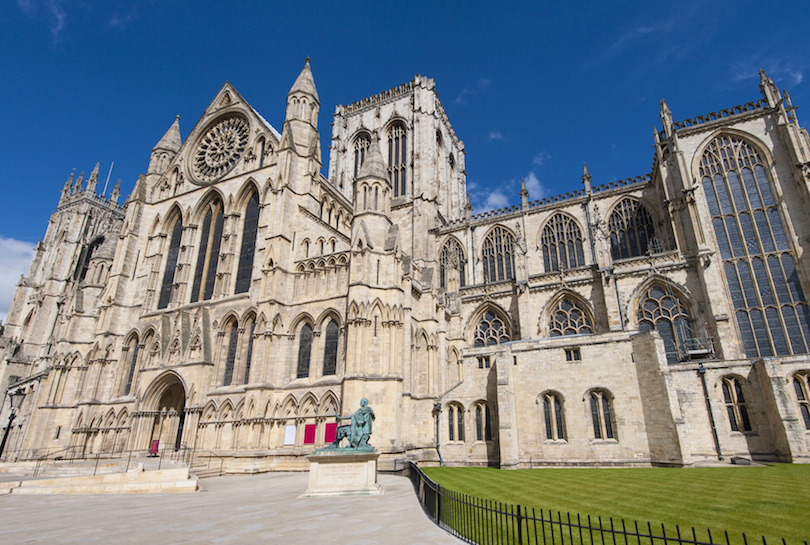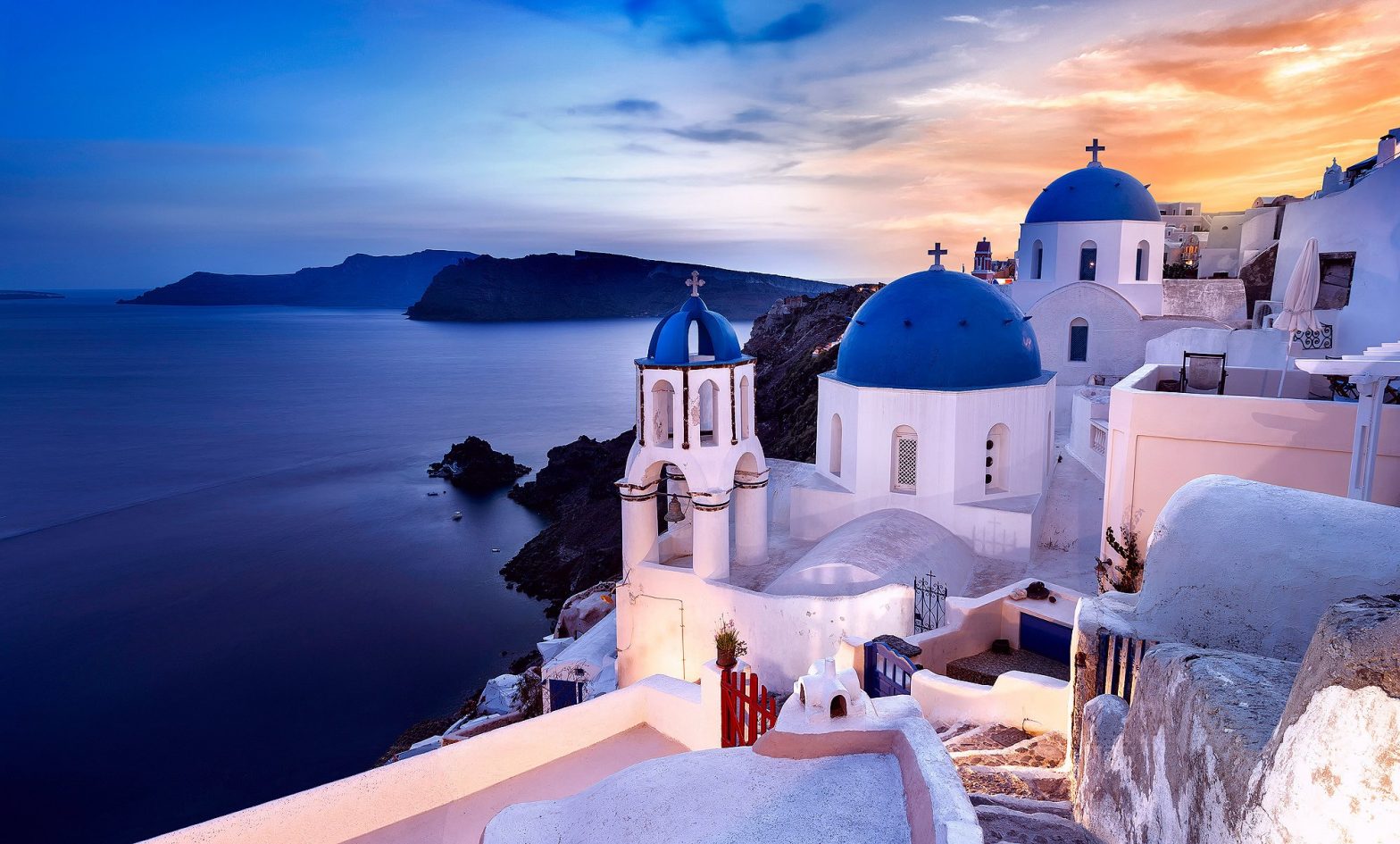O n at least this one point, believers and atheists can likely agree: many of the world’s sacred structures are truly works of architectural grandeur. First of all, we need us to ask one question: What is a cathedral?
The difference between a church and a cathedral?
Cathedrals are not just tourist destinations but places that can convey a sense of the spiritual and sacred, even to those who are not of the Christian faith. The difference between a church and a cathedral is simply that a cathedral is a church that also serves as the seat of the bishop (a senior member of the Christian clergy, typically in charge of a diocese and empowered to confer holy orders).

10
St. Vitus Cathedral, Prague, Czech Republic
St. Vitus Cathedral is the largest and the most important temple in Prague. Apart from religious services the coronations of Czech kings and queens also took place in here. The cathedral is a place of interment of remains of provincial patron saints, sovereigns, noblemen and archbishops. This cathedral is an excellent example of Gothic architecture and is the biggest and most important church in the country. Located within Prague Castle and containing the tombs of many Bohemian kings and Holy Roman Emperors. Cathedral dimensions are 124 × 60 meters, the main tower is 96. 5 meters high, front towers 82 m, arch height 33. 2 m. Founded – c. 930, Current form: 1344
9
St. Stephen’s Cathedral, Vienna, Austria
With almost three million visitors to Vienna a year St. Stephen’s Cathedral is the number one attraction in the city: Tours in and around the Cathedral feature plenty of worthwhile things to see and lots of interesting information. You can also climb up St. Stephen’s Cathedral (South Tower, Türmer Stube), take the lift up to the Pummerin (North Tower), or go down into the catacombs. Specifications: Length 107 metres (351 ft) Width 70 metres (230 ft) Width (nave) 38. 9 metres (128 ft) Height (max) 136. 7 metres (448 ft) Groundbreaking 1137 Completed 1160
8
The Basilica di Santa Maria del Fiore(Florence Cathedral), Florence, Italy
Florence‘s cathedral stands tall over the city with its magnificent Renaissance dome designed by Filippo Brunelleschi. The cathedral named in honor of Santa Maria del Fiore is a vast Gothic structure built on the site of the 7th century church of Santa Reparata, the remains of which can be seen in the crypt. The cathedral was begun at the end of the 13th century by Arnolfo di Cambio, and the dome, which dominates the exterior, was added in the 15th century on a design of Filippo Brunelleschi. A statue to each of these important architects can be found outside to the right of the cathedral, both admiring their work for the rest of eternity. Florence’s cathedral is the 4th largest in the world, after St. Peter’s in Rome, St. Paul’s in London and the Duomo in Milan. The exterior is covered in a decorative mix of pink, white and green marble. The interior, by contrast, is pretty stark and plain but quite enjoyable on warm summer days since the temperature inside tends to be cooler. The mosaic pavements are certainly its main attraction within. The biggest artwork within the cathedral is Giorgio Vasari’s frescoes of the Last Judgment (1572-9): they were designed by Vasari but painted mostly by his less-talented student Frederico Zuccari by 1579. The cathedral complex, located in Piazza del Duomo, includes the Baptistery and Giotto’s Campanile. The three buildings are part of the UNESCO World Heritage Site covering the historic centre of Florence and are a major attraction to tourists visiting the region of Tuscany. The basilica is one of Italy’s largest churches, and until development of new structural materials in the modern era, the dome was the largest in the world. It remains the largest brick dome ever constructed. Specifications: Length 153 metres (502 ft) Height (max) 114. 5 metres (376 ft)
7
Cathedral of St. Michael and St. Gudula, Treurenberg Hill in Brussels, Belgium
A chapel dedicated to St Michael was probably built here as early as the 9th century. In the 11 th century it was replaced by a Romanesque church which in 1047 became a «collegiale church». The relics of St Gudula were transferred there and it thus became «the collegiale church of St Michae! and St Gudula». The building of the Cathedral (which used to be the collegiate church of St. Michael and St. Gudula) commenced at the beginning of the 13th century on the orders of Henry I, Duke of Brabant. This period coincides with the appearance of the Gothic style in this area. It took about 300 years to complete this gigantic undertaking. It was finished just before the reign of the emperor Charles V. Its architecture shows the different characteristics of the Brabantine Gothic style. The dimensions of the building are: exterior length 114 metres (374 ft), interior length 109 metres (358 ft), exterior width at the choir 57 metres (187 ft), interior width 54 metres (177 ft) and height of towers 64 metres (210 ft).
The cathedral is built of stone from the Gobertange quarry which is located approximately 45 km south-east of the site of the Cathedral.
6
Westminster Abbey, City of Westminster, London, England
Westminster Abbey is steeped in more than a thousand years of history. Benedictine monks first came to this site in the middle of the tenth century, establishing a tradition of daily worship which continues to this day. The Abbey has been the coronation church since 1066 and is the final resting place of seventeen monarchs. The present church, begun by Henry III in 1245, is one of the most important Gothic buildings in the country, with the medieval shrine of an Anglo-Saxon saint still at its heart. A treasure house of paintings, stained glass, pavements, textiles and other artefacts, Westminster Abbey is also the place where some of the most significant people in the nation’s history are buried or commemorated. Taken as a whole the tombs and memorials comprise the most significant single collection of monumental sculpture anywhere in the United Kingdom. The Library and Muniment Room houses the important (and growing) collections of archives, printed books and manuscripts belonging to the Dean and Chapter of Westminster, providing a centre for their study and for research into all aspects of the Abbey’s long and varied history.



